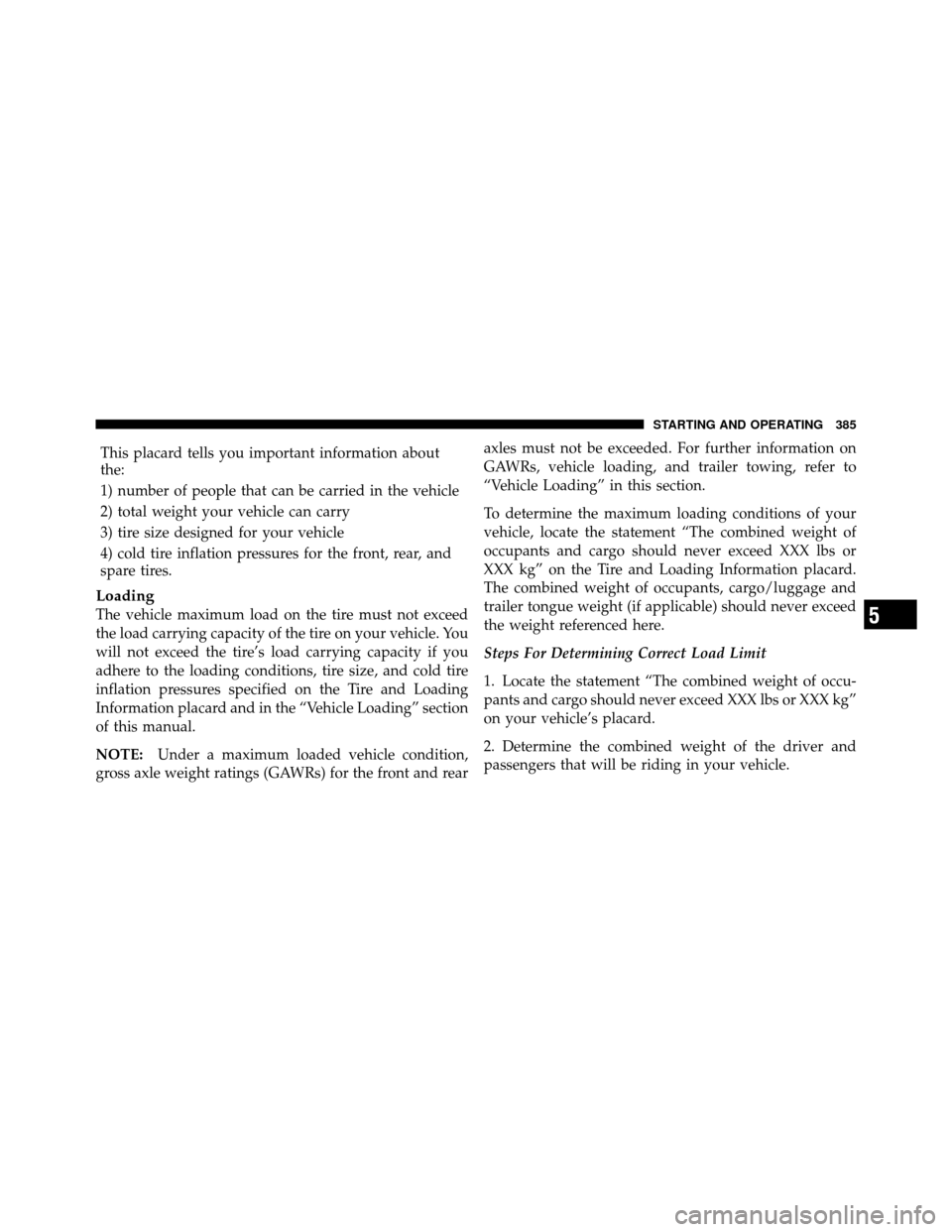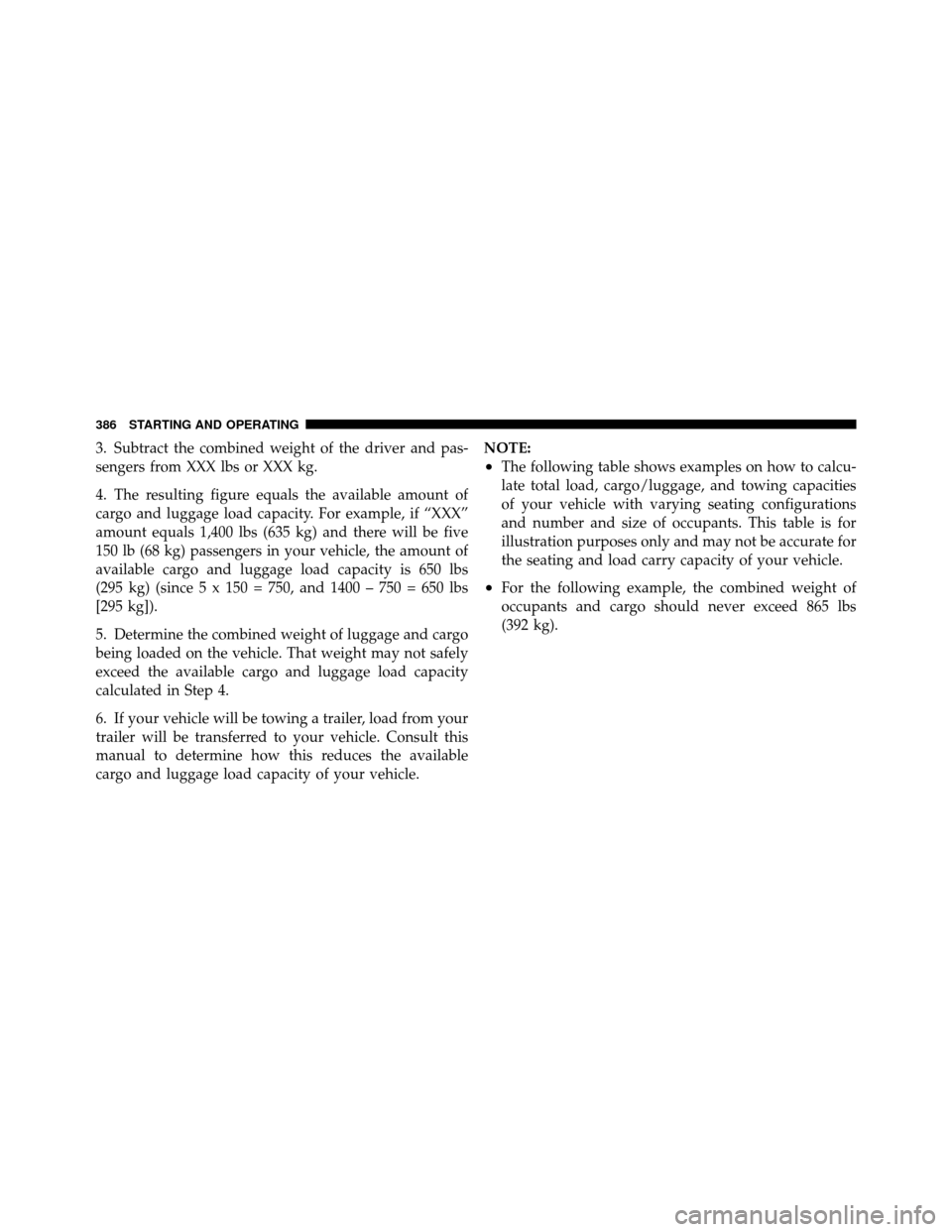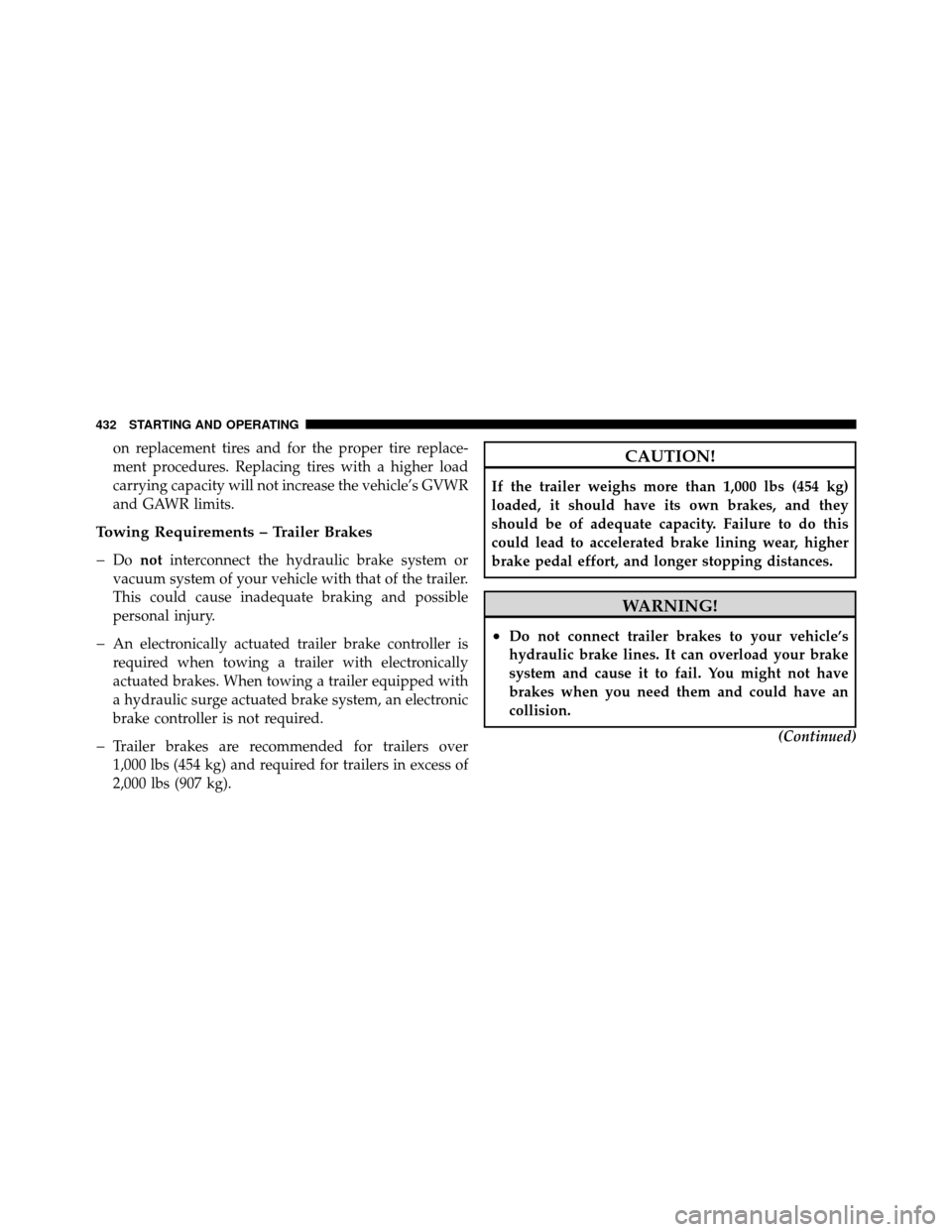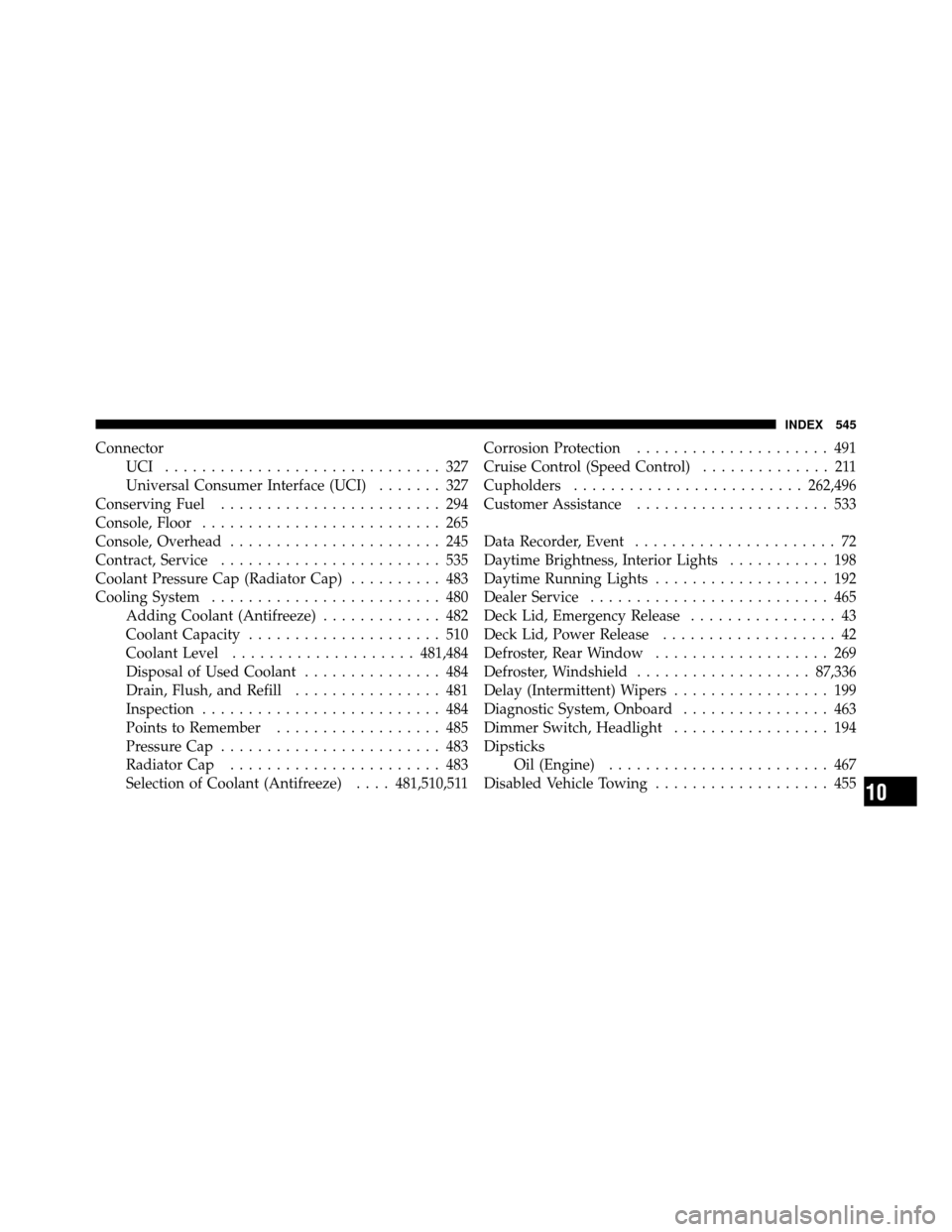Page 387 of 566

This placard tells you important information about
the:
1) number of people that can be carried in the vehicle
2) total weight your vehicle can carry
3) tire size designed for your vehicle
4) cold tire inflation pressures for the front, rear, and
spare tires.
Loading
The vehicle maximum load on the tire must not exceed
the load carrying capacity of the tire on your vehicle. You
will not exceed the tire’s load carrying capacity if you
adhere to the loading conditions, tire size, and cold tire
inflation pressures specified on the Tire and Loading
Information placard and in the “Vehicle Loading” section
of this manual.
NOTE:Under a maximum loaded vehicle condition,
gross axle weight ratings (GAWRs) for the front and rear axles must not be exceeded. For further information on
GAWRs, vehicle loading, and trailer towing, refer to
“Vehicle Loading” in this section.
To determine the maximum loading conditions of your
vehicle, locate the statement “The combined weight of
occupants and cargo should never exceed XXX lbs or
XXX kg” on the Tire and Loading Information placard.
The combined weight of occupants, cargo/luggage and
trailer tongue weight (if applicable) should never exceed
the weight referenced here.
Steps For Determining Correct Load Limit
1. Locate the statement “The combined weight of occu-
pants and cargo should never exceed XXX lbs or XXX kg”
on your vehicle’s placard.
2. Determine the combined weight of the driver and
passengers that will be riding in your vehicle.5
STARTING AND OPERATING 385
Page 388 of 566

3. Subtract the combined weight of the driver and pas-
sengers from XXX lbs or XXX kg.
4. The resulting figure equals the available amount of
cargo and luggage load capacity. For example, if “XXX”
amount equals 1,400 lbs (635 kg) and there will be five
150 lb (68 kg) passengers in your vehicle, the amount of
available cargo and luggage load capacity is 650 lbs
(295 kg) (since 5 x 150 = 750, and 1400 – 750 = 650 lbs
[295 kg]).
5. Determine the combined weight of luggage and cargo
being loaded on the vehicle. That weight may not safely
exceed the available cargo and luggage load capacity
calculated in Step 4.
6. If your vehicle will be towing a trailer, load from your
trailer will be transferred to your vehicle. Consult this
manual to determine how this reduces the available
cargo and luggage load capacity of your vehicle.NOTE:
•The following table shows examples on how to calcu-
late total load, cargo/luggage, and towing capacities
of your vehicle with varying seating configurations
and number and size of occupants. This table is for
illustration purposes only and may not be accurate for
the seating and load carry capacity of your vehicle.
•For the following example, the combined weight of
occupants and cargo should never exceed 865 lbs
(392 kg).
386 STARTING AND OPERATING
Page 434 of 566

on replacement tires and for the proper tire replace-
ment procedures. Replacing tires with a higher load
carrying capacity will not increase the vehicle’s GVWR
and GAWR limits.
Towing Requirements – Trailer Brakes
�
Donot interconnect the hydraulic brake system or
vacuum system of your vehicle with that of the trailer.
This could cause inadequate braking and possible
personal injury.
�An electronically actuated trailer brake controller is
required when towing a trailer with electronically
actuated brakes. When towing a trailer equipped with
a hydraulic surge actuated brake system, an electronic
brake controller is not required.
�Trailer brakes are recommended for trailers over
1,000 lbs (454 kg) and required for trailers in excess of
2,000 lbs (907 kg).
CAUTION!
If the trailer weighs more than 1,000 lbs (454 kg)
loaded, it should have its own brakes, and they
should be of adequate capacity. Failure to do this
could lead to accelerated brake lining wear, higher
brake pedal effort, and longer stopping distances.
WARNING!
•Do not connect trailer brakes to your vehicle’s
hydraulic brake lines. It can overload your brake
system and cause it to fail. You might not have
brakes when you need them and could have an
collision.
(Continued)
432 STARTING AND OPERATING
Page 547 of 566

ConnectorUCI .............................. 327
Universal Consumer Interface (UCI) ....... 327
Conserving Fuel ........................ 294
Console, Floor .......................... 265
Console, Overhead ....................... 245
Contract, Service ........................ 535
Coolant Pressure Cap (Radiator Cap) .......... 483
Cooling System ......................... 480
Adding Coolant (Antifreeze) ............. 482
Coolant Capacity ..................... 510
Coolant Level .................... 481,484
Disposal of Used Coolant ............... 484
Drain, Flush, and Refill ................ 481
Inspection .......................... 484
Points to Remember .................. 485
Pressure Cap ........................ 483
Radiator Cap ....................... 483
Selection of Coolant (Antifreeze) ....481,510,511 Corrosion Protection
..................... 491
Cruise Control (Speed Control) .............. 211
Cupholders ......................... 262,496
Customer Assistance ..................... 533
Data Recorder, Event ...................... 72
Daytime Brightness, Interior Lights ........... 198
Daytime Running Lights ................... 192
Dealer Service .......................... 465
Deck Lid, Emergency Release ................ 43
Deck Lid, Power Release ................... 42
Defroster, Rear Window ................... 269
Defroster, Windshield ................... 87,336
Delay (Intermittent) Wipers ................. 199
Diagnostic System, Onboard ................ 463
Dimmer Switch, Headlight ................. 194
Dipsticks Oil (Engine) ........................ 467
Disabled Vehicle Towing ................... 455
10
INDEX 545